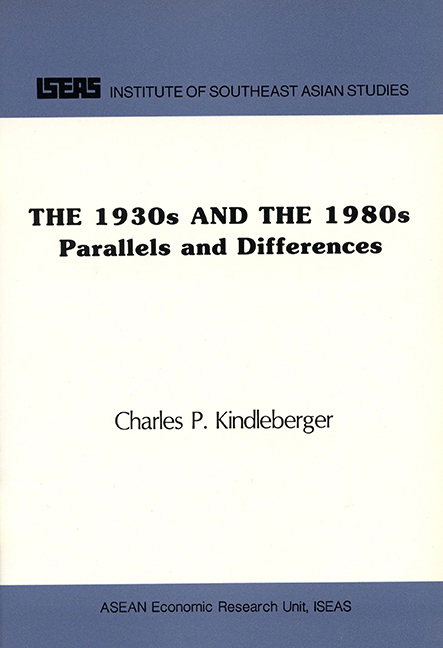The 1930s and the 1980s: Parallels and Differences
Published online by Cambridge University Press: 21 October 2015
Summary
Professor Sandhu, Ladies, and Gentlemen
It is a great pleasure for me to be here in Singapore for the first time. I have two weeks to study your country, enough to make me an expert. It's only after you have been here four or five weeks that you get confused. Unhappily, I won't have enough time left in the rest of the stay that has been allotted to me to use this information fully.
It will come as no surprise to you, I hope, that I have thought about this subject before, and even talked on it, to the 50th Anniversary Celebration of the Icelandic Economic Association in Reykjavik, last month. The parallels and differences I have in mind are mostly those of the world economy as a whole and its fragility. For Singapore, the differences from the 1930s are enormous, except perhaps for the prices of tin and rubber. Singapore is no longer a colony. Its income has risen manifold. It is an industrial city-state, exporting manufactures and services rather than raw materials. My studies have been largely confined to Europe and the United States, with some slight exposure to Latin America, but one must be blind and deaf not to recognize the vast differences from the 1930s that has transpired in your remarkable city with its remarkable economy.
My economic studies started more than fifty years ago. For a long time I was interested in the theories of international trade and international finance. Bit by bit, as these became more technical and even possibly esoteric, I have wandered, perhaps drifted, but in any event moved, into economic history, first studying The World in Depression, 1929-1939, then going further back in time to about 1720, in a book entitled, Manias, Panics and Crashes, A Study in Financial Crises, a series of booms and busts, with emphasis on the latter, that may help me to understand the present if not perhaps to predict the future.
- Type
- Chapter
- Information
- The 1930s and the 1980sParallels and Differences, pp. 1 - 14Publisher: ISEAS–Yusof Ishak InstitutePrint publication year: 1989

